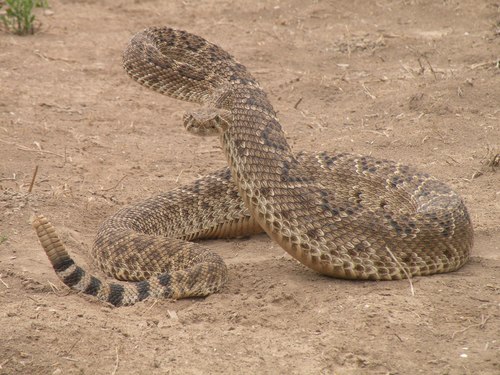
Western Diamondback Rattlesnake
The Western Diamondback Rattlesnake features striking diamond patterns and a signature rattle at its tail. Found in deserts and scrublands, it uses venomous fangs to hunt rodents, maintaining ecological balance. Its iconic rattle warns predators and humans alike, exemplifying adaptability and survival.
15 years
Lifespan
Length: 61 - 213 cm
Size
Brown, Fawn, Tan
Color
Medium
Aggression
Least Concern
Conservation Status
Stable
Population Trend
Distribution Range of the Western Diamondback Rattlesnake
Crotalus atrox, commonly known as the Western Diamondback Rattlesnake, is native to the southwestern United States and northern Mexico. It is found in states such as Texas, Arizona, New Mexico, Oklahoma, and even as far east as Arkansas and Louisiana. In Mexico, its range extends into Sonora, Chihuahua, Coahuila, Nuevo León, Tamaulipas, and Zacatecas.
Western Diamondback Rattlesnake's Habitat
Environmental Conditions
The Western Diamondback Rattlesnake typically inhabits arid and semi-arid regions, commonly found in deserts, grasslands, and scrub plant communities. It thrives in environments that offer a combination of dry conditions and moderately dense vegetation, which provides both cover and opportunities for hunting.
Ecological Niche
This species occupies a role as both a predator and prey within its ecosystem. It primarily feeds on small mammals such as rodents, but it can also consume birds and reptiles. The Western Diamondback plays a significant role in controlling the population of its prey species. Adapted to warm climates, it relies on ambushing tactics due to its cryptic coloration and ability to remain motionless for extended periods. Temperature variations throughout the year may influence its behavior and activity patterns, especially in more temperate regions of its range.
Copyright @ Nature Style Limited. All Rights Reserved.
 English
English